Best Things to Do in Bangkok, Thailand – 2025 Travel Guide
As Thailand’s vibrant capital, Bangkok delivers an experience unlike any other. Bursting with energy, and blending ancient traditions with modern wonders in a way that keeps visitors constantly amazed.
Towering skyscrapers stand alongside golden temples, bustling street markets thrive next to luxury shopping malls, and the scent of sizzling street food fills the air as tuk-tuks weave through the chaotic streets. Every corner of the city offers something new, whether it’s a hidden café, a stunning rooftop bar, or a centuries-old temple glowing under the sun.
History of Bangkok
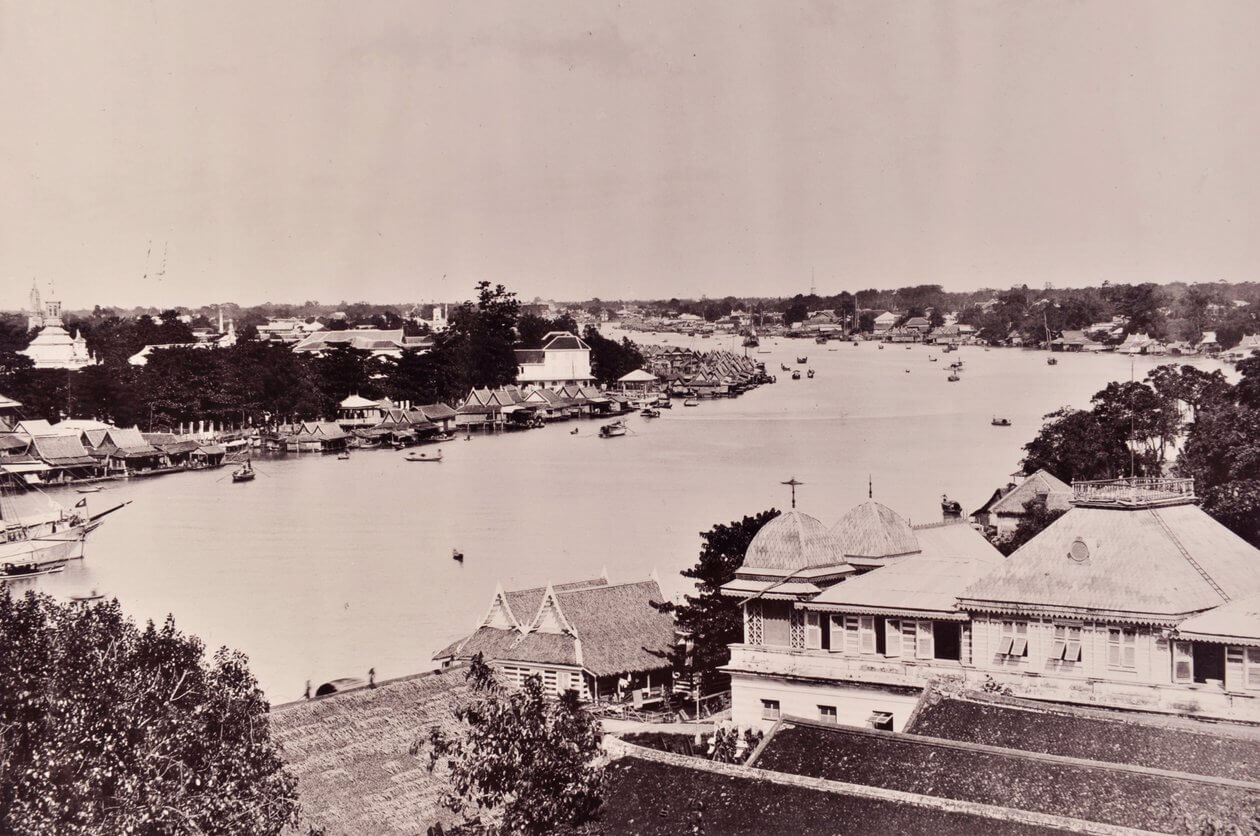
Bangkok’s history reflects its unique blend of modernity and culture. Originally a riverside village, Bangkok became Thailand’s capital in 1782 when King Rama I established the city as the seat of power. With the construction of the Grand Palace, Wat Phra Kaew, and other monumental temples, the city quickly transformed into a cultural and political hub.
By the mid-20th century, Bangkok’s street markets, temples, and vibrant nightlife made it a must-visit destination. The rise of backpacker culture in the 1970s saw it evolve into a traveler’s haven, while luxury hotels and shopping malls solidified Bangkok’s reputation as a world-class city. Today, Bangkok brings in countless tourists, attracted to its endless offerings.
Best Things To Do In Bangkok
Bangkok never runs out of things to see, do, and experience. Whether you’re exploring its grand temples, indulging in world-class street food, or diving into its legendary nightlife, the city offers an adventure at every turn.
Grand Palace & Wat Phra Kaew
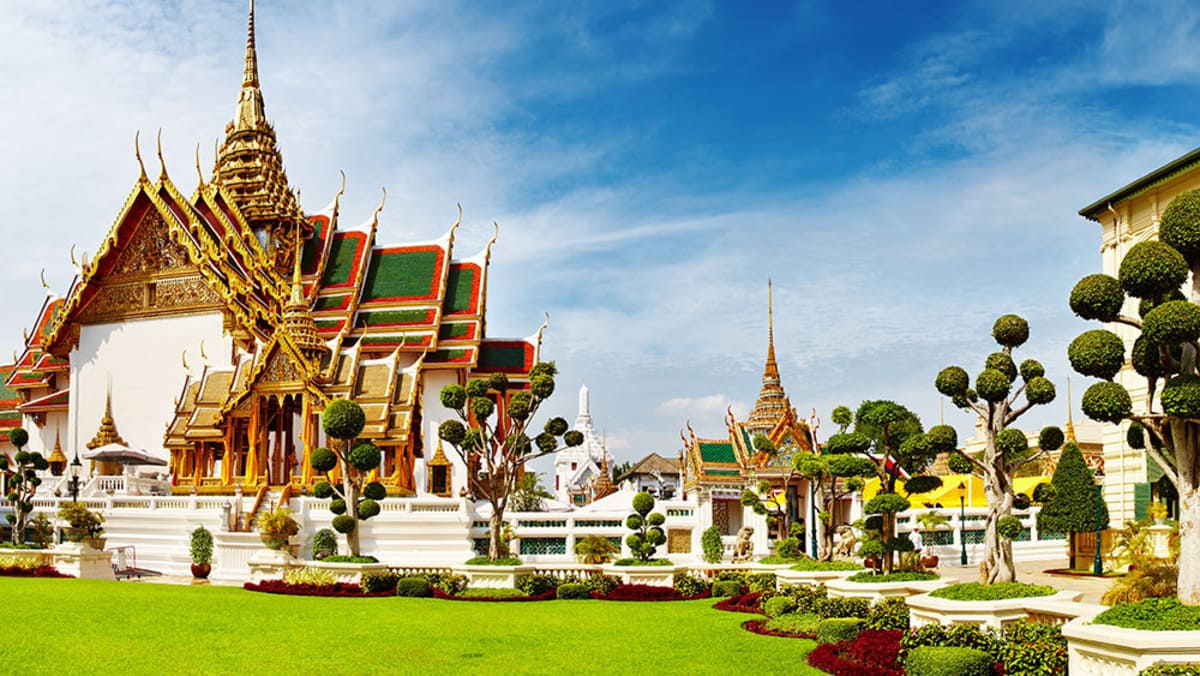
No visit to Bangkok is complete without stepping into the grandeur of the Grand Palace. Built in 1782, this sprawling complex of golden rooftops, towering spires, and intricate murals was the official residence of Thai kings for over 150 years. Today, it remains a center of ceremonial events and royal traditions.
The highlight of the Grand Palace is Wat Phra Kaew (Temple of the Emerald Buddha), Thailand’s most sacred temple, which houses a stunning Buddha statue carved from a single piece of jade. According to legend, the Emerald Buddha originated in India and has since traveled through Cambodia and Laos before finally being enshrined in Bangkok.
Wat Arun
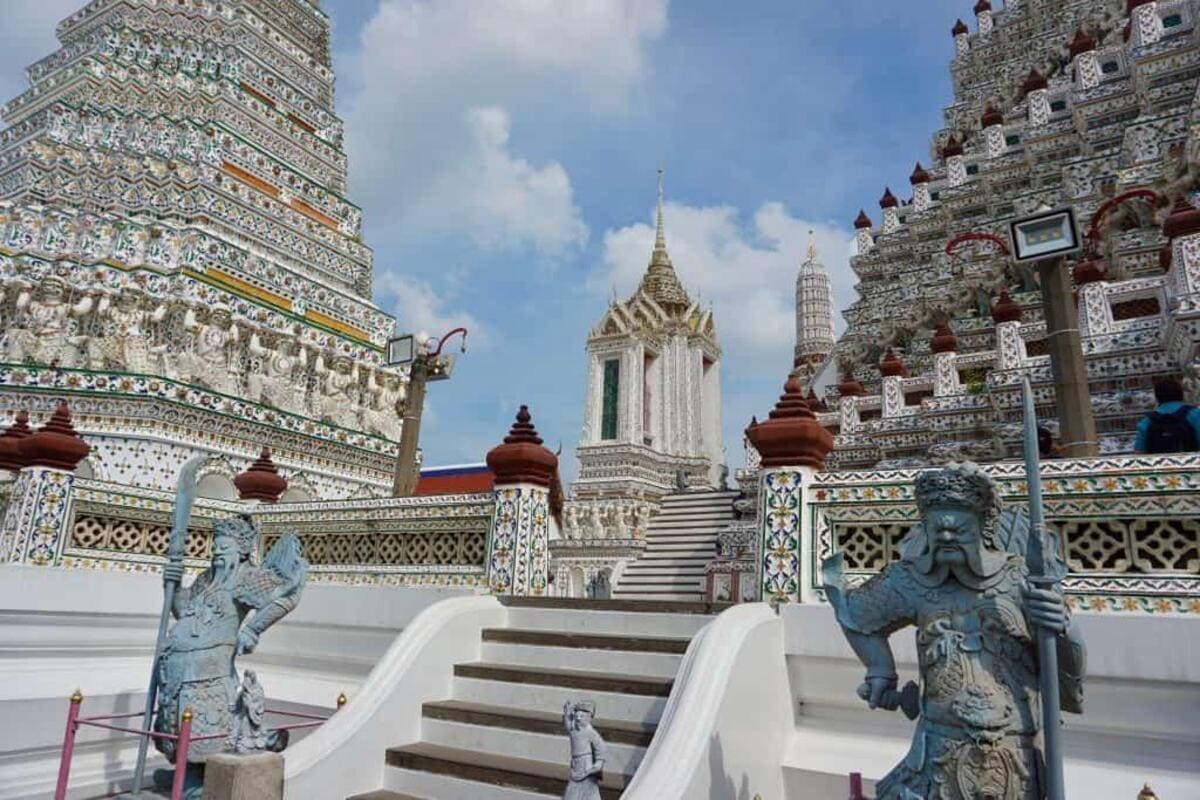
Wat Arun, known as the Temple of Dawn, stands majestically on the banks of the Chao Phraya River. Its towering 79-meter central prang (spire), decorated with pieces of colorful porcelain, shimmers in the sunlight, making it one of the most photographed landmarks in Bangkok.
Unlike many of Bangkok’s temples, which are known for their golden hues, Wat Arun’s unique design features intricate floral mosaics made from broken Chinese porcelain, a material that was once used as ballast in trading ships. This unusual feature gives the temple its distinct aesthetic.
Wat Pho & the Giant Reclining Buddha
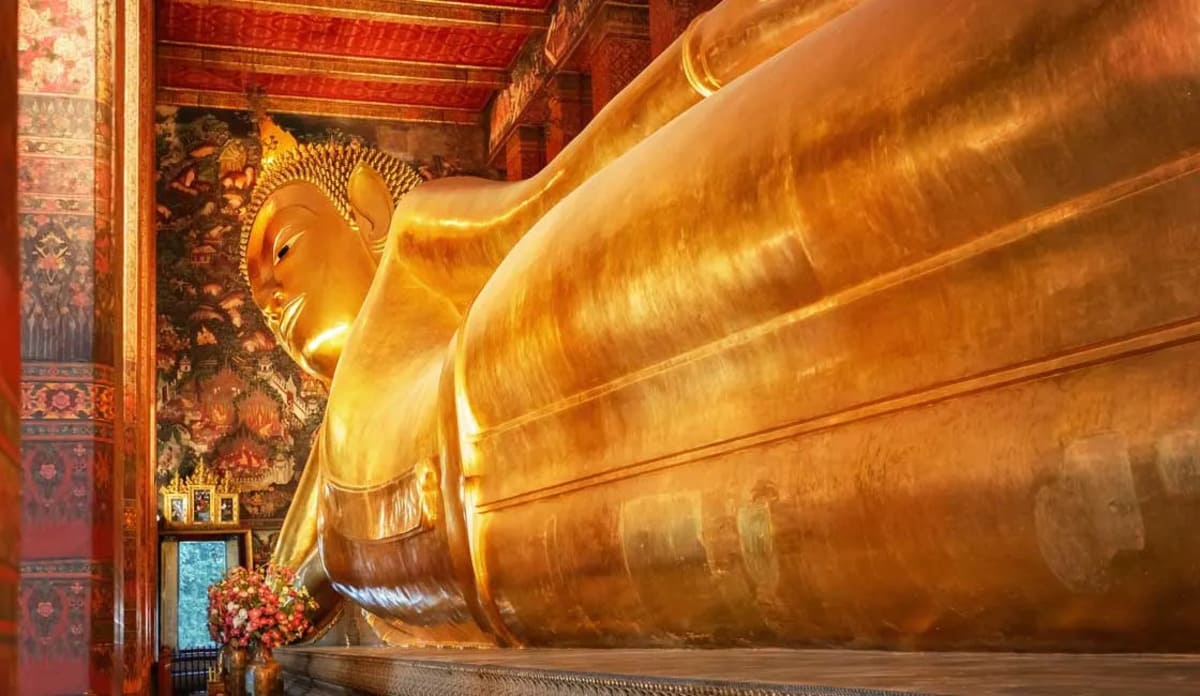
Located just a short walk from the Grand Palace, Wat Pho is one of the oldest and largest temple complexes in Bangkok, best known for its gigantic 46-meter-long Reclining Buddha. The Buddha’s feet alone are over 5 meters long and inlaid with intricate mother-of-pearl designs depicting auspicious symbols.
Wat Pho is also considered the birthplace of traditional Thai massage, as it once served as a center for education and healing. Even today, the temple houses a renowned massage school where visitors can experience authentic Thai massages, known for their deep stretching and pressure techniques.
Jim Thompson House
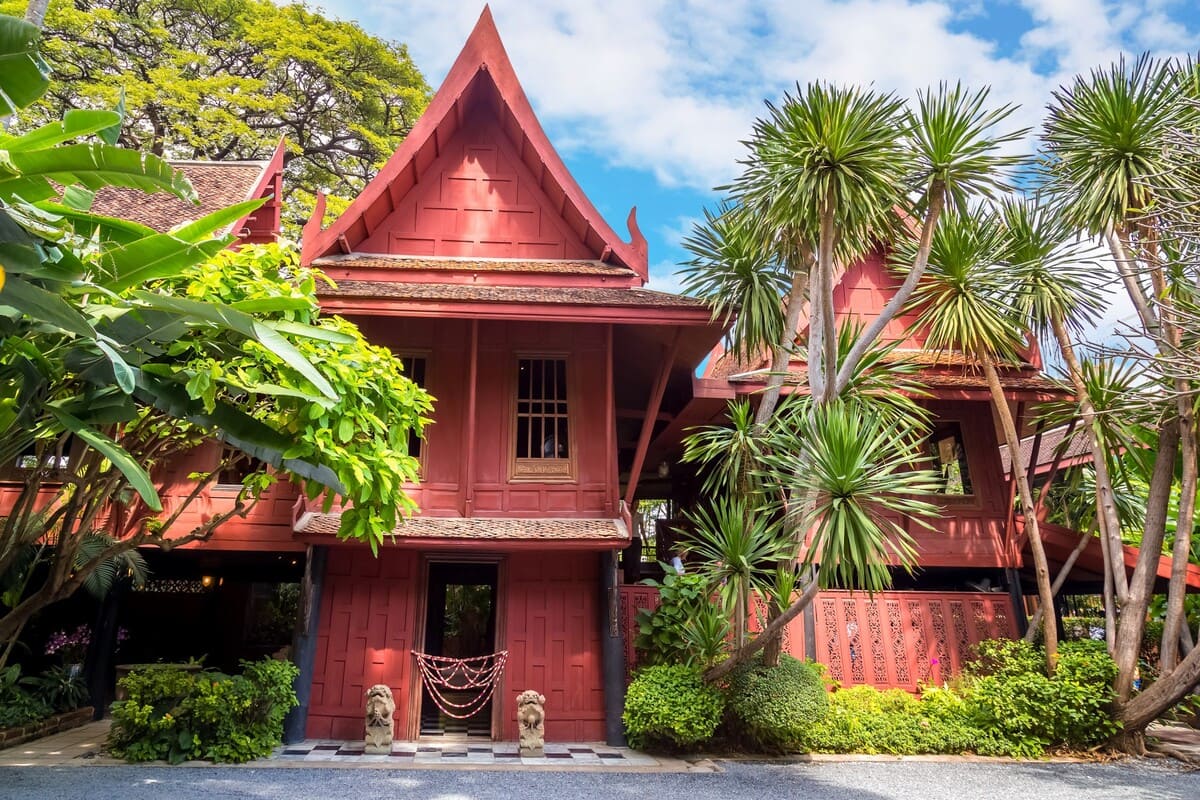
Jim Thompson was an American businessman who helped revive Thailand’s silk industry in the mid-20th century. His beautifully preserved traditional Thai house, now a museum, showcases his personal art collection, as well as Thai architecture and craftsmanship.
Built using six traditional teakwood houses transported from Ayutthaya, the structure itself is a masterpiece of Thai design, with elevated platforms, intricate carvings, and hidden passageways. Inside, visitors can find rare Buddhist sculptures, Chinese blue-and-white porcelain, and antique paintings from across Southeast Asia.
Chao Phraya River & Canal Tours
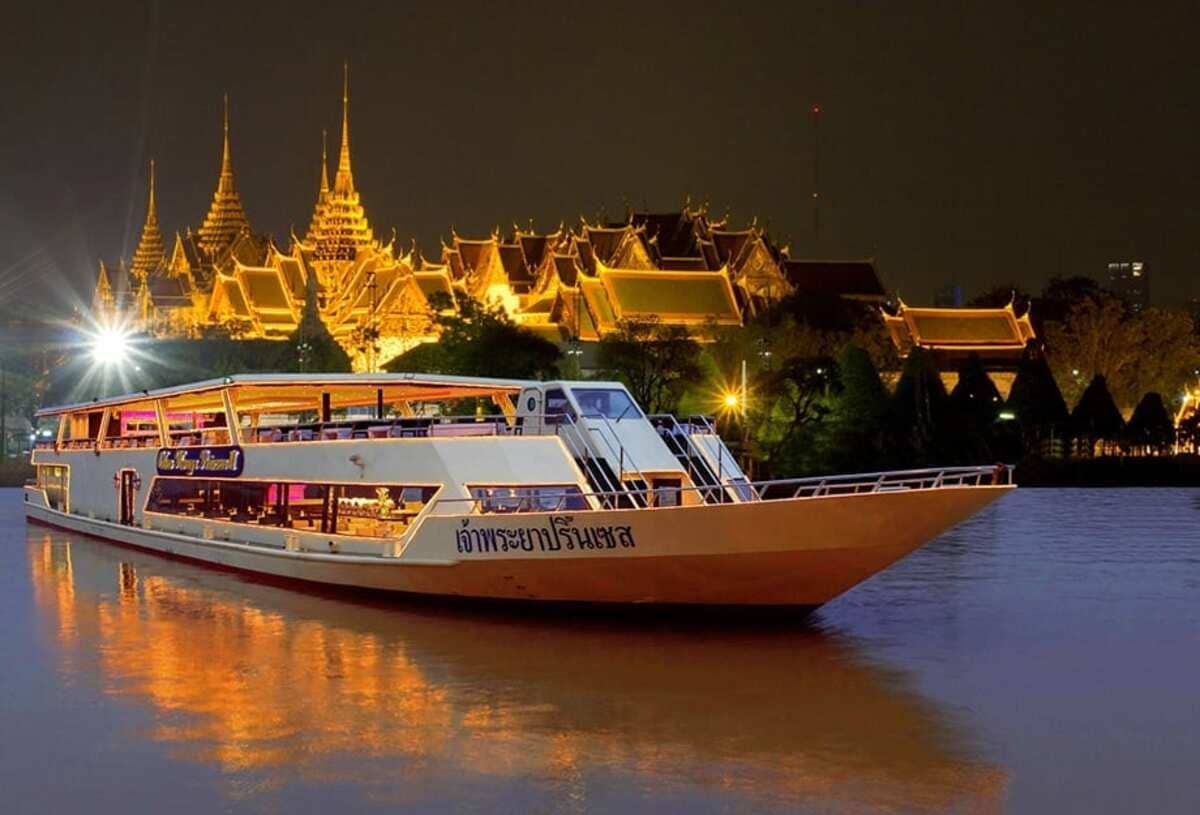
The Chao Phraya River has long been the lifeblood of Bangkok, serving as a major transportation route for centuries. A boat ride along the river offers a fascinating contrast between old and new Bangkok—on one side, you’ll see modern skyscrapers and luxury hotels, while on the other, traditional wooden stilt houses and floating markets reflect the city’s past.
Wat Saket (The Golden Mount)
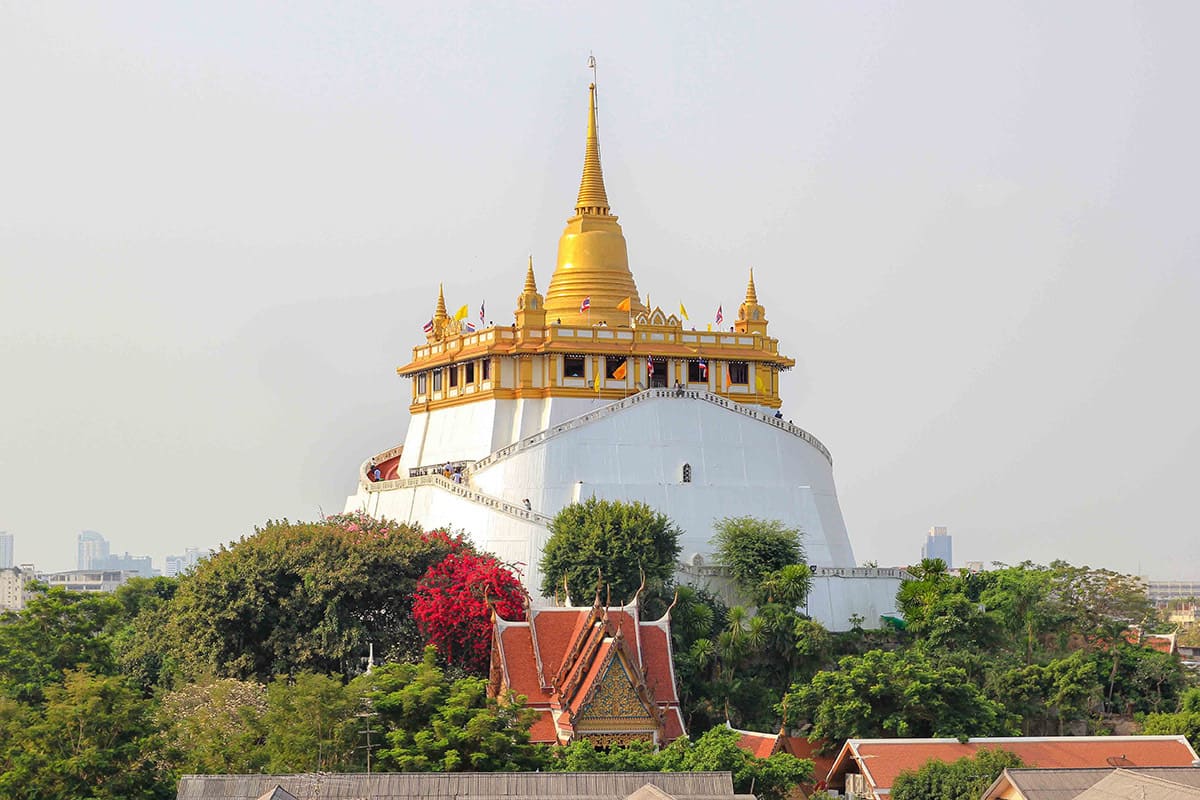
Rising above the city on an artificial hill, Wat Saket, or the Golden Mount, offers one of the best panoramic views in Bangkok. The temple houses a sacred relic of the Buddha, and the journey to the top involves a peaceful climb up 344 steps, lined with Buddhist statues, prayer bells, and flowing waterfalls.
During the annual Loy Krathong festival, Wat Saket becomes the center of celebrations, with lanterns lighting up the sky and traditional processions taking place around the temple grounds.
Chinatown (Yaowarat Road)
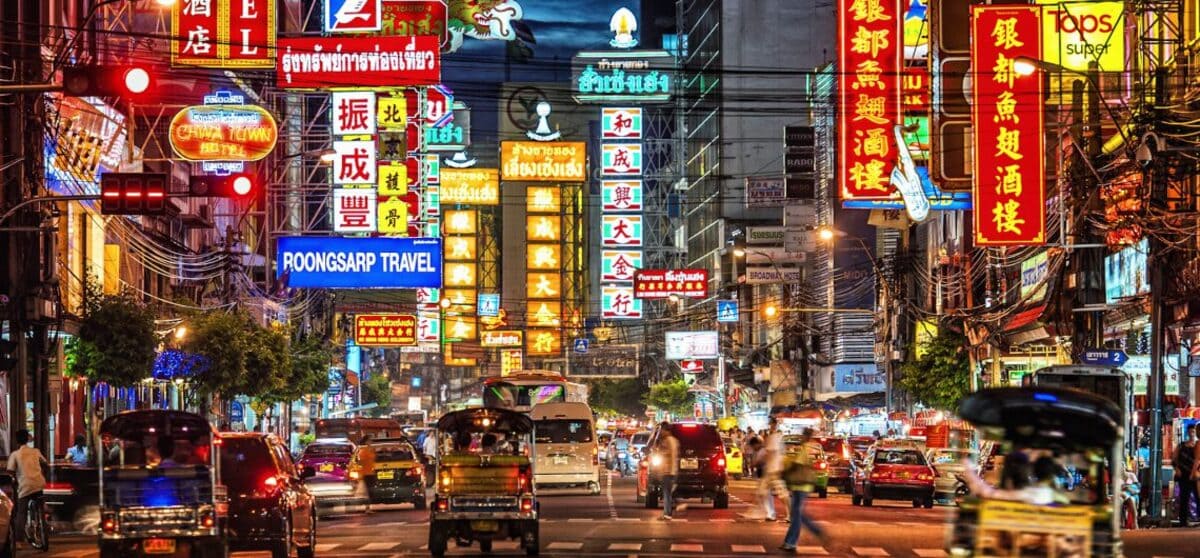
Bangkok’s Chinatown is one of the most vibrant and culturally rich neighborhoods in the city. By day, Yaowarat Road is a maze of gold shops, traditional medicine stores, and old shophouses selling everything from dried herbs to jade jewelry. By night, the area transforms into a street food paradise.
Chinatown’s history dates back to the late 18th century, when Chinese merchants settled in Bangkok after being relocated from their original community near the Grand Palace. Today, it remains a stronghold of Thai-Chinese culture, with stunning temples and hidden alleyways leading to traditional tea houses and century-old family businesses.
Lumpini Park
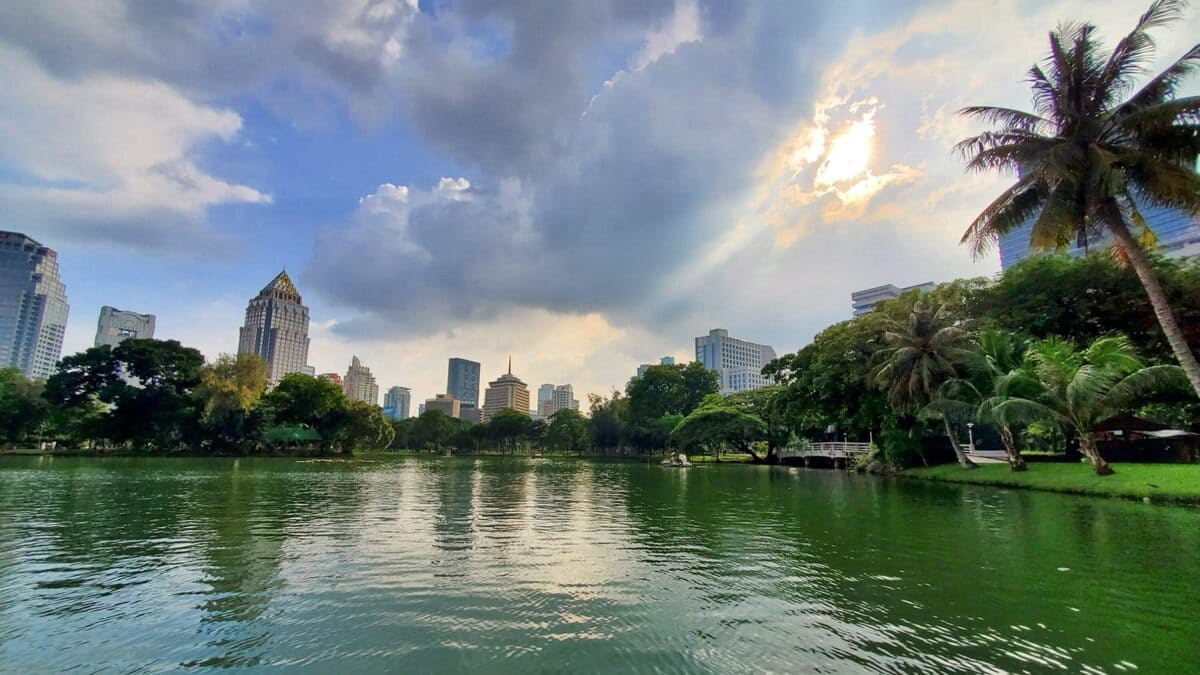
Lumpini Park is Bangkok’s green heart, offering a peaceful escape from the city’s non-stop energy. Spanning over 500,000 square meters, this park is a haven for joggers, and families enjoying a slow afternoon by the lake. It’s also one of the best places to observe Bangkok’s infamous monitor lizards, giant reptilians that roam freely but are mostly harmless.
The park was originally gifted to the public by King Rama VI in the 1920s, making it Bangkok’s first public park. Today, it remains one of the most beloved outdoor spaces in the city, an often much needed break from Bangkok’s urban jungle.
Bangkok Art and Culture Center (BACC)
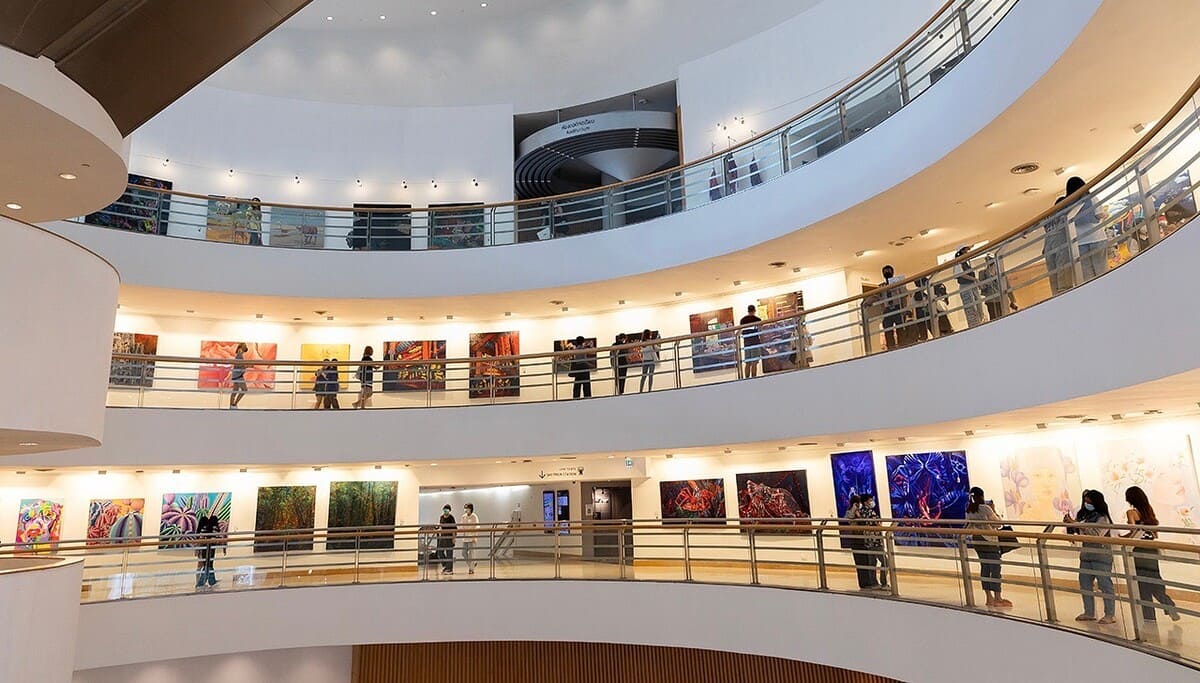
For a dose of contemporary culture, the Bangkok Art and Culture Center (BACC) is the city’s premier hub for modern art, photography, and design exhibitions. With its spiral walkways and minimalist aesthetic, the center feels like Bangkok’s answer to the Guggenheim, housing both established and emerging Thai artists.
Opened in 2008, BACC was born out of a push to make art more accessible to the public, and today it hosts a rotating lineup of experimental installations, live performances, and thought-provoking exhibitions. The center is also home to quirky independent bookstores, art cafes, and craft shops.
King Power Mahanakhon Skywalk
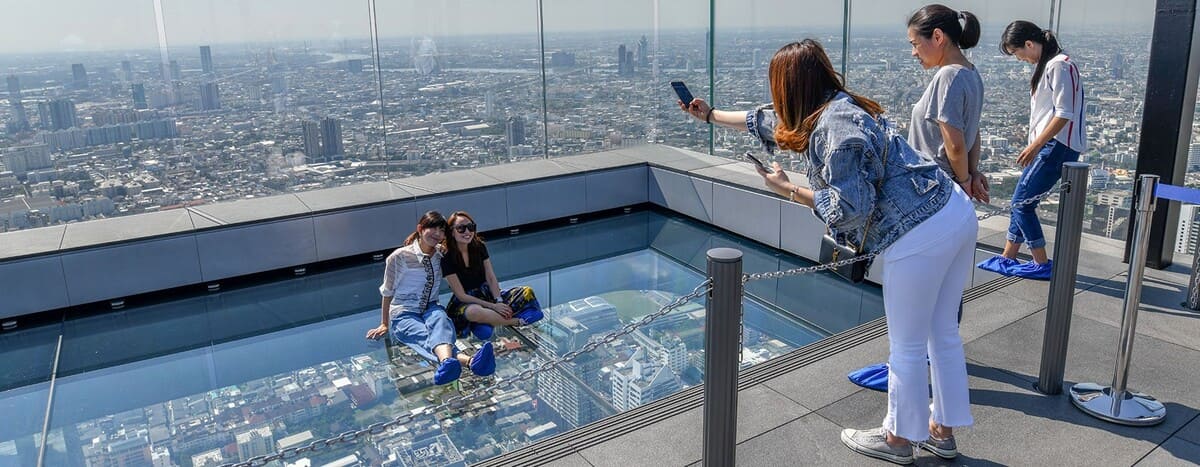
For those who love thrilling heights, the King Power Mahanakhon Skywalk is the highest observation deck in Thailand, offering a jaw-dropping 360-degree view of Bangkok from 314 meters up. The tower itself is an architectural marvel, with a futuristic, pixelated design that makes it one of the city’s most recognizable skyscrapers.
The real highlight, though, is the glass-floored Skywalk, where visitors can step out onto a transparent ledge that extends over the edge of the building. It’s not for the faint of heart, but for those who dare, the experience is nothing short of breathtaking.
Where & What To Eat in Bangkok
Pad Thai
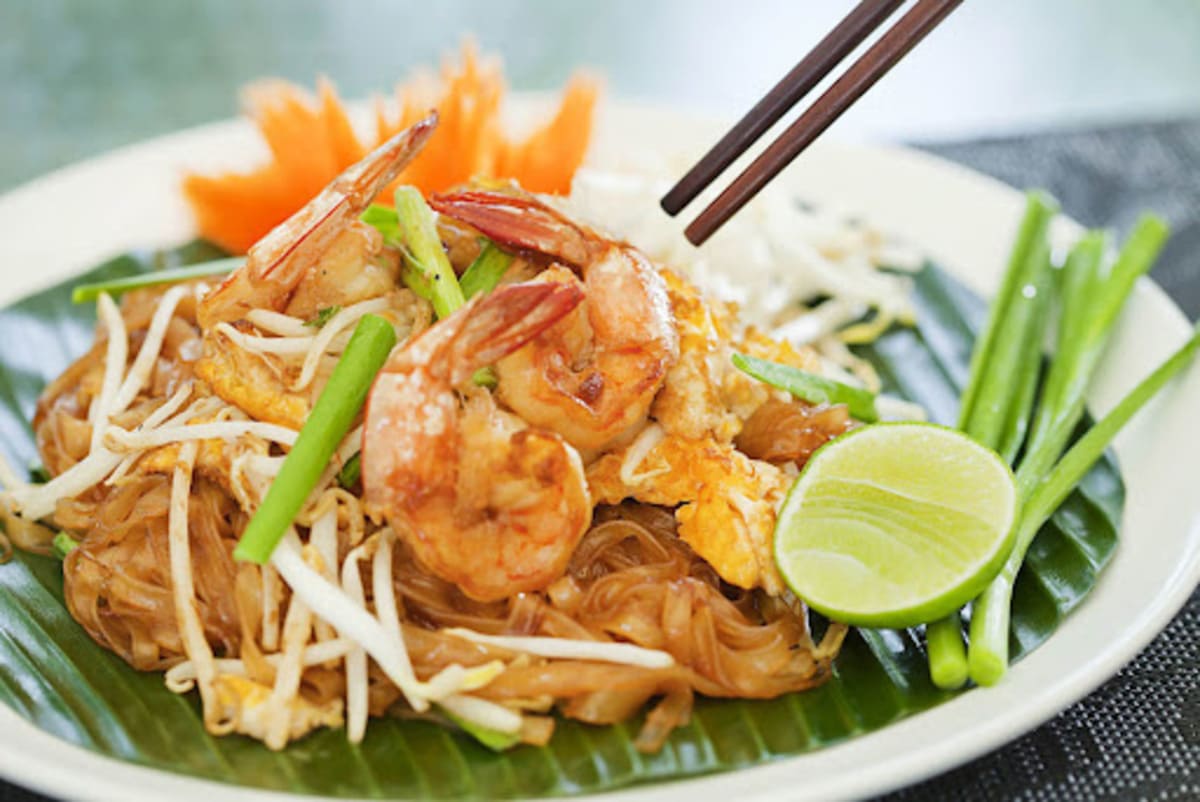
A perfect balance of sweet, sour, salty, and spicy, Pad Thai is made with thin rice noodles, stir-fried with eggs, tofu, shrimp or chicken, bean sprouts, and crushed peanuts, all tossed in a flavorful tamarind sauce.
You’ll find this dish everywhere, but the best places to try it is Thipsamai Pad Thai, which has been serving it since the 1960s.
Boat Noodles
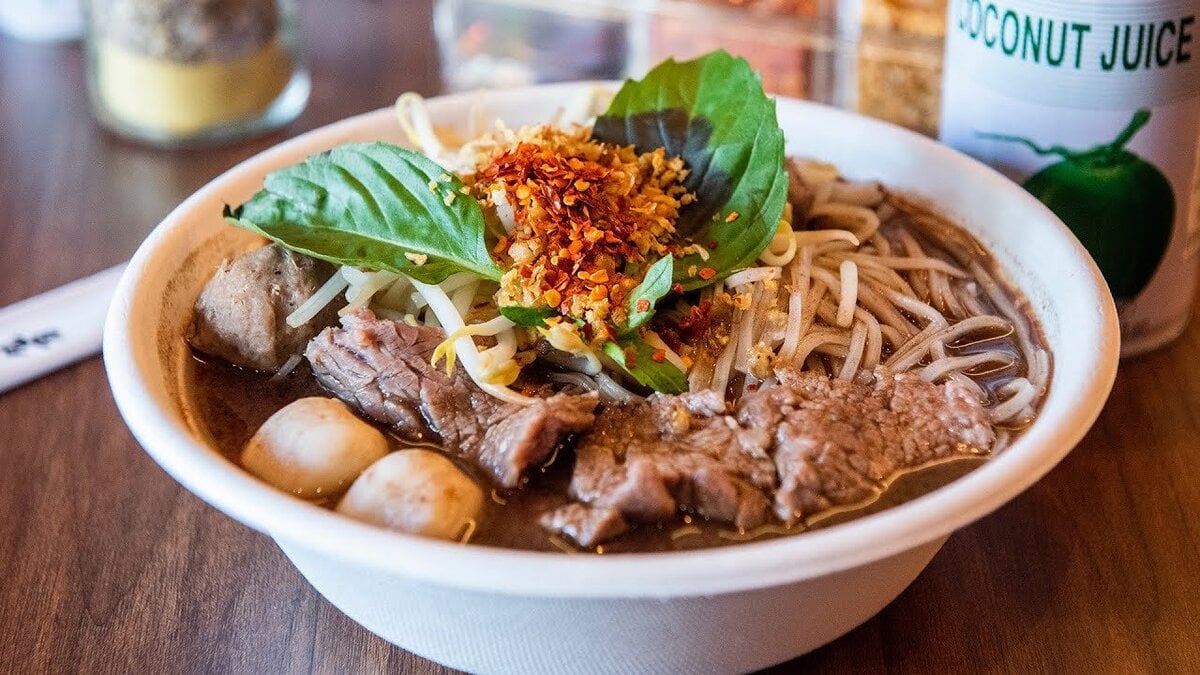
Originally served from wooden boats on Bangkok’s canals, boat noodles are a rich, flavorful dish. These small bowls of noodles come with pork or beef, a thick broth made from dark soy sauce, cinnamon, and sometimes a hint of blood for extra richness, topped with fresh herbs.
If you want to experience boat noodles at their best, head to Victory Monument where stalls serve many of these mini noodle bowls.
Tom Yum Goong
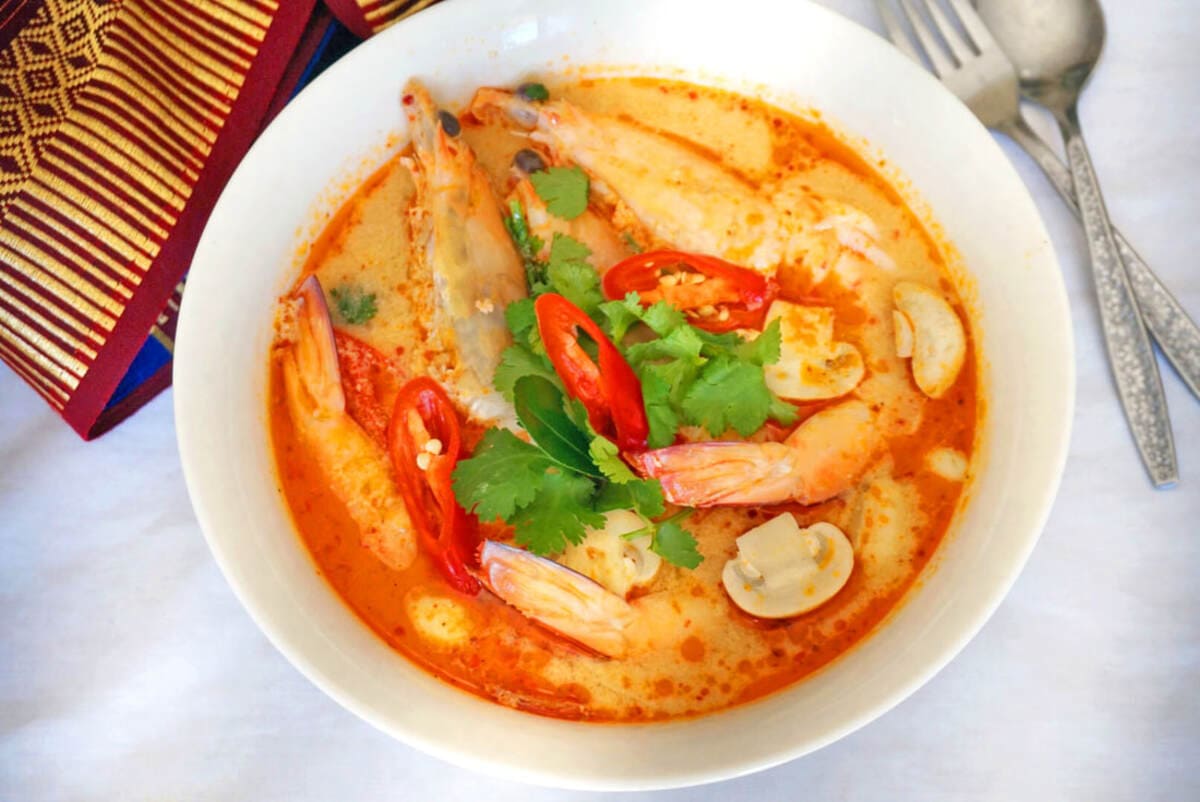
Tom Yum Goong is a hot and sour shrimp soup made with lemongrass, kaffir lime leaves, galangal, chili, lime juice, and fresh prawns. You can order it clear or creamy, but regardless, it truly represents Thai cuisine’s bold flavors.
Some of the best versions can be found at Pe Aor Tom Yum Goong, known for its massive river prawns and rich broth.
Som Tam (Papaya Salad)
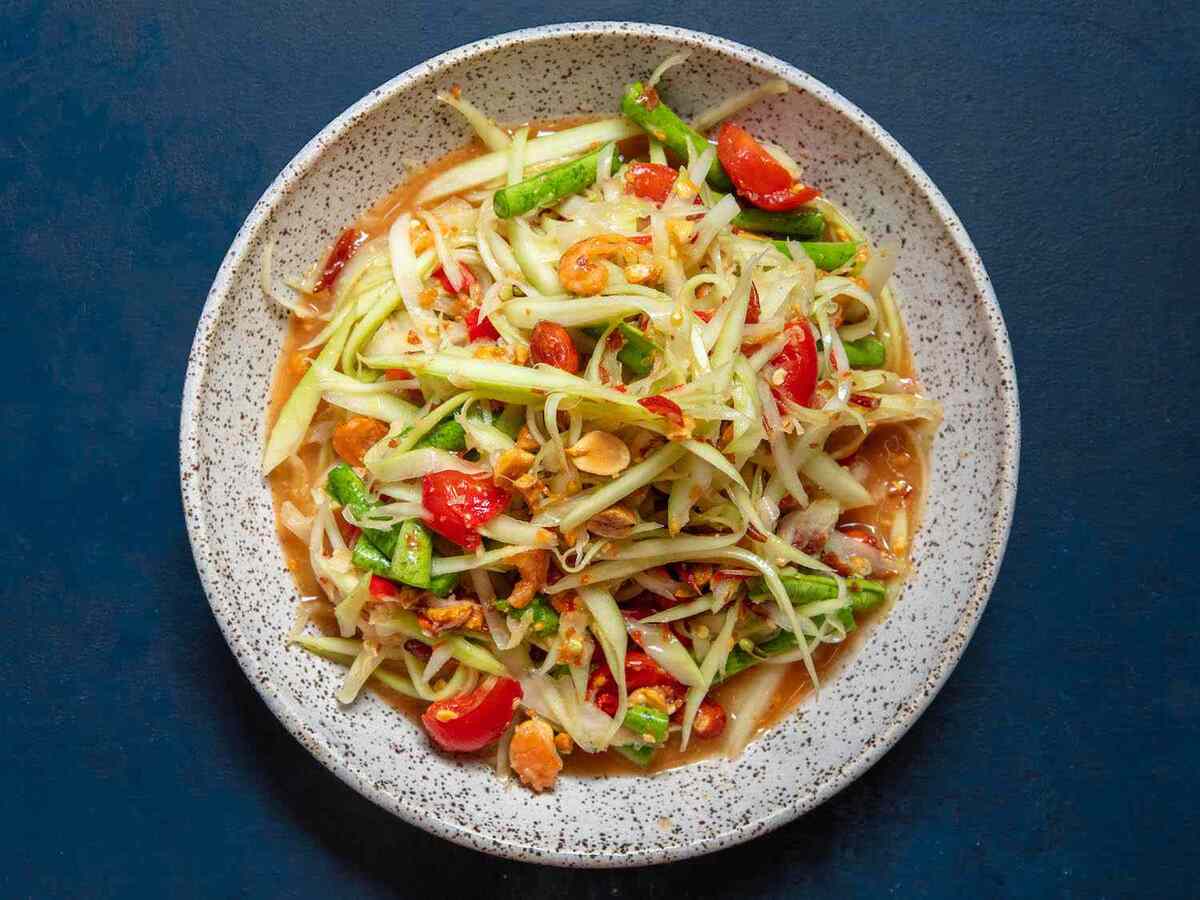
Som Tam is Thailand’s famous spicy green papaya salad, a dish that combines shredded unripe papaya, cherry tomatoes, green beans, peanuts, dried shrimp, and chili, all tossed in a tangy lime-fish sauce dressing. It’s a mix of sweet, sour, salty, and fiery heat in one bite.
For an authentic taste, visit Som Tam Nua, a legendary spot in Siam Square.
Khao Man Gai (Thai Chicken Rice)
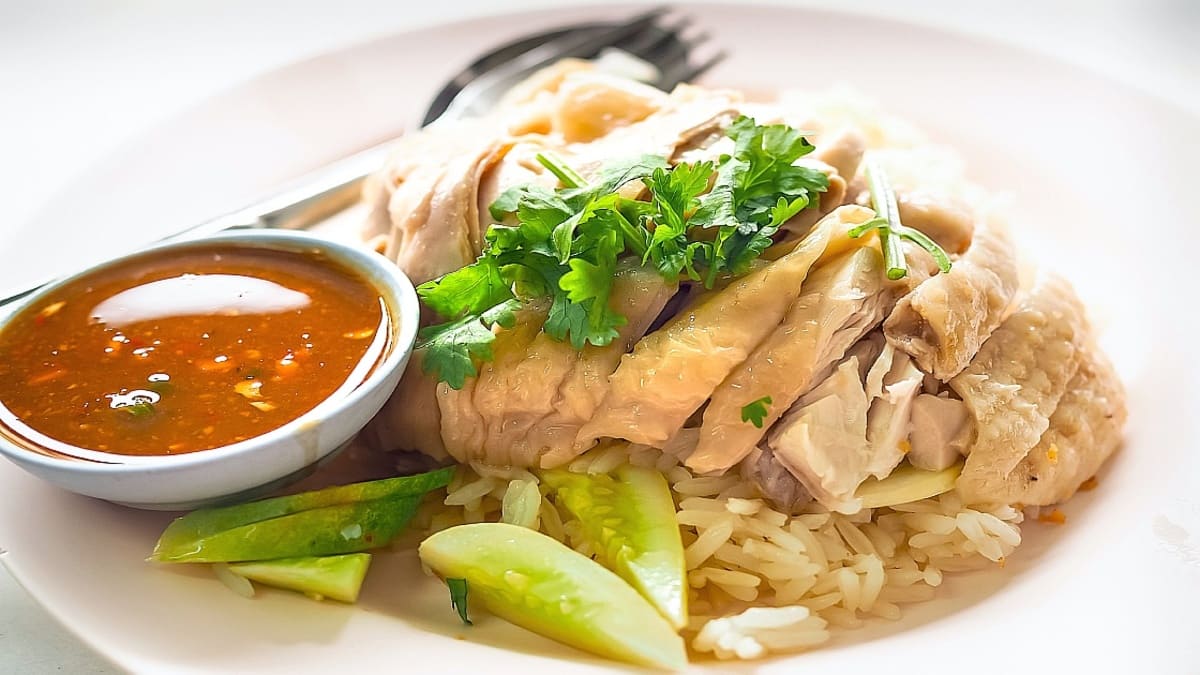
A Thai take on Hainanese chicken rice, Khao Man Gai is a simple but flavorful dish made with poached chicken, fragrant rice cooked in chicken fat, and served with a garlicky chili sauce. It’s comforting, satisfying, and best enjoyed with a side of clear chicken soup.
You’ll find Khao Man Gai all over Bangkok, but one of the best places to try it is Go-Ang Pratunam Chicken Rice, a Michelin Bib Gourmand-awarded restaurant.
Best Shopping Spots in Bangkok
Chatuchak Weekend Market
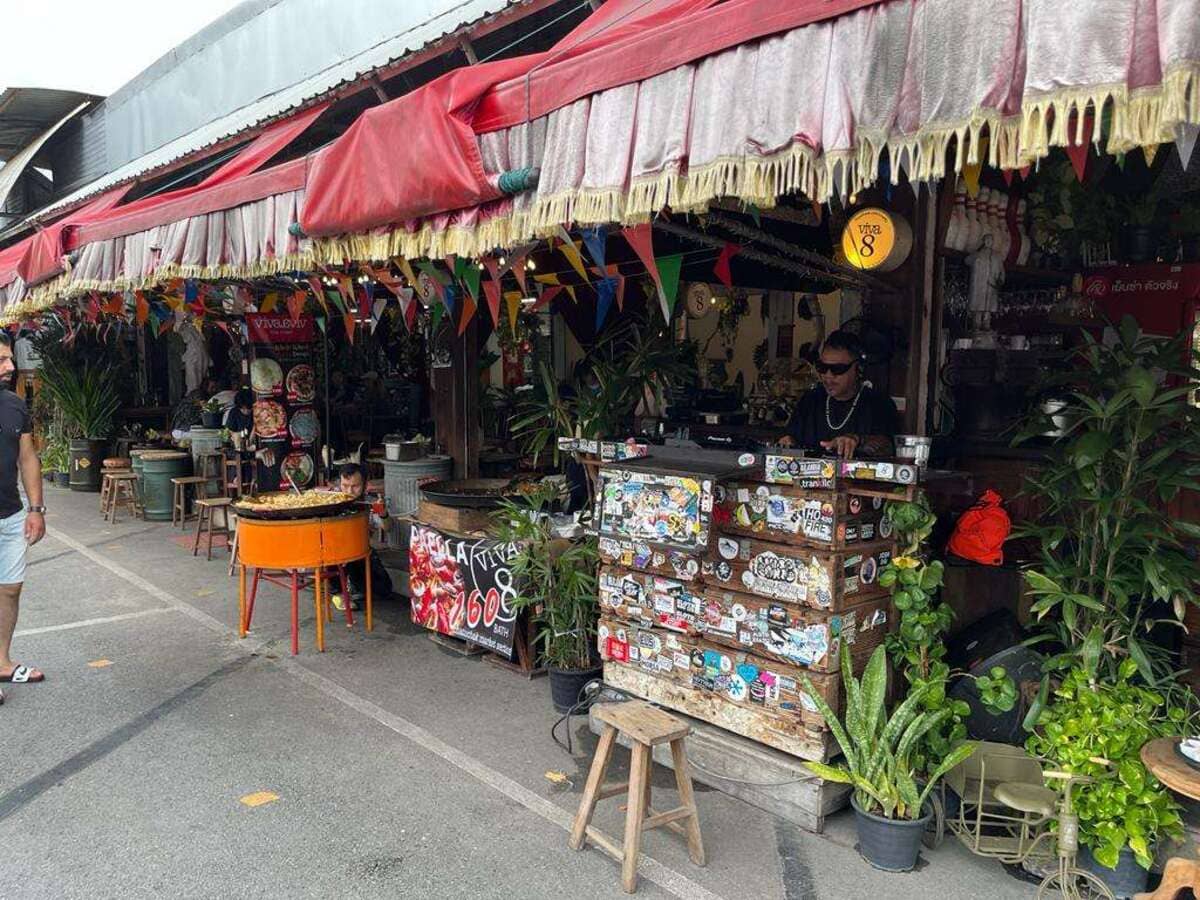
For an authentic street shopping experience, nothing beats Chatuchak Weekend Market. With over 15,000 stalls, this market sells everything from handmade crafts, vintage clothing, and antiques to home décor, souvenirs, and street food. It’s easy to get lost in the maze of vendors, but that’s part of the fun!
Pro tip: arrive early in the morning to avoid the midday heat and crowds.
Siam Paragon
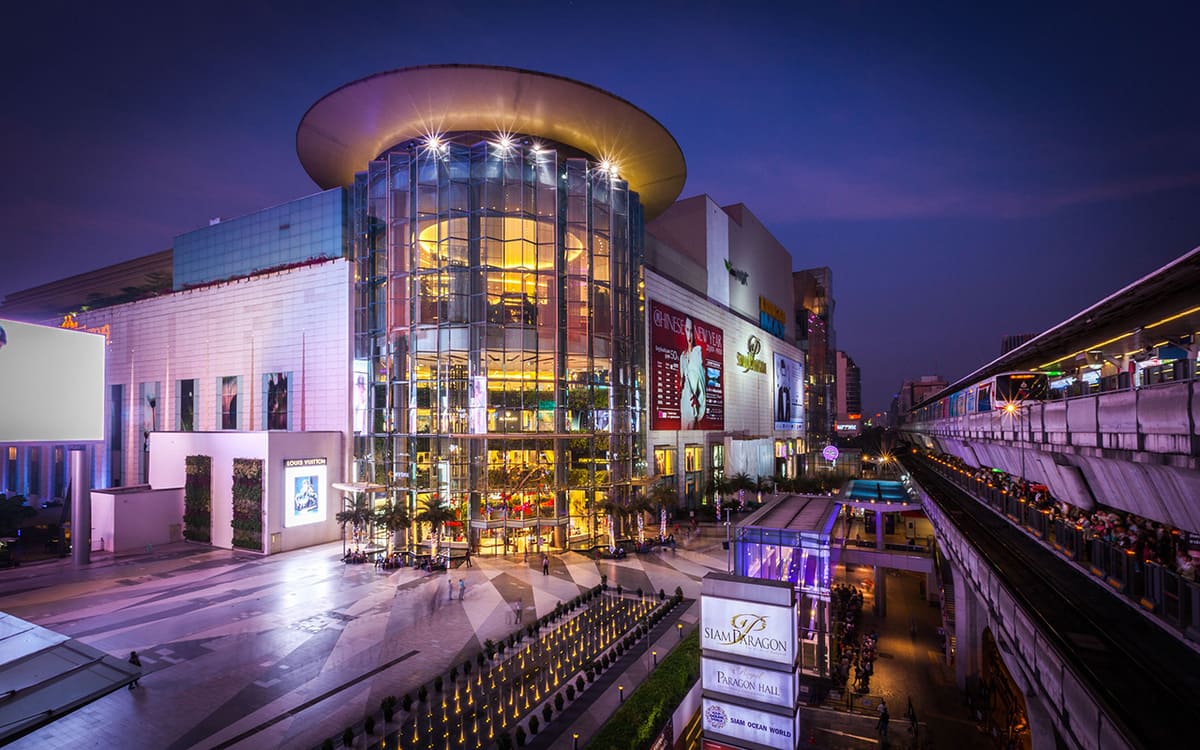
If you love high-end brands, Siam Paragon is the place to be. This massive mall is home to luxury stores like Louis Vuitton, Gucci, Prada, and Chanel, alongside premium Thai designer boutiques. Beyond fashion, you’ll find high-tech gadgets, gourmet food markets, and even SEA LIFE Bangkok, the largest aquarium in Thailand.
MBK Center

If you’re looking for affordable fashion, electronics, and souvenirs, MBK Center is the place to go. This eight-story shopping mall is filled with bargain clothing stalls, mobile phone shops, and streetwear boutiques, making it a favorite among budget travelers and locals. You can haggle at many of the stalls, so don’t be afraid to negotiate for the best price!
Asiatique The Riverfront
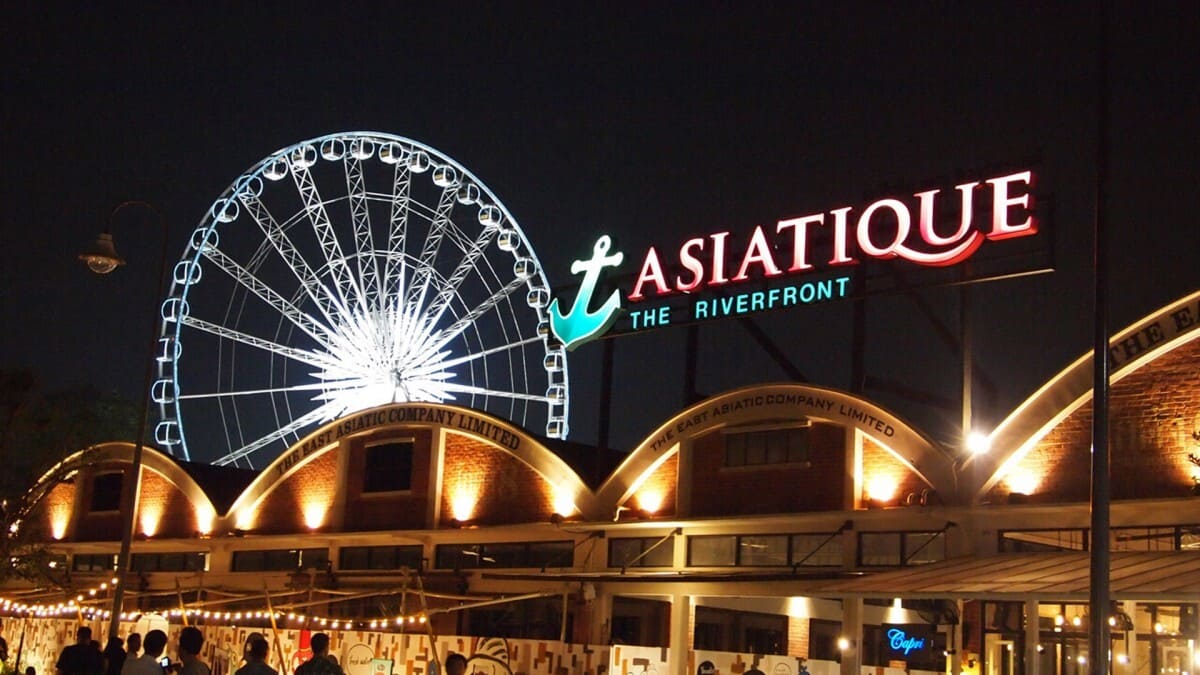
For a unique night shopping experience, head to Asiatique The Riverfront. Combining a market vibe with a modern mall, it offers boutique shopping, local handicrafts, and stylish clothing in a lively riverside setting. Besides shopping, you can also enjoy live performances, restaurants, and even ride the Asiatique Sky, Bangkok’s giant Ferris wheel.
Mae Klong Railway Market
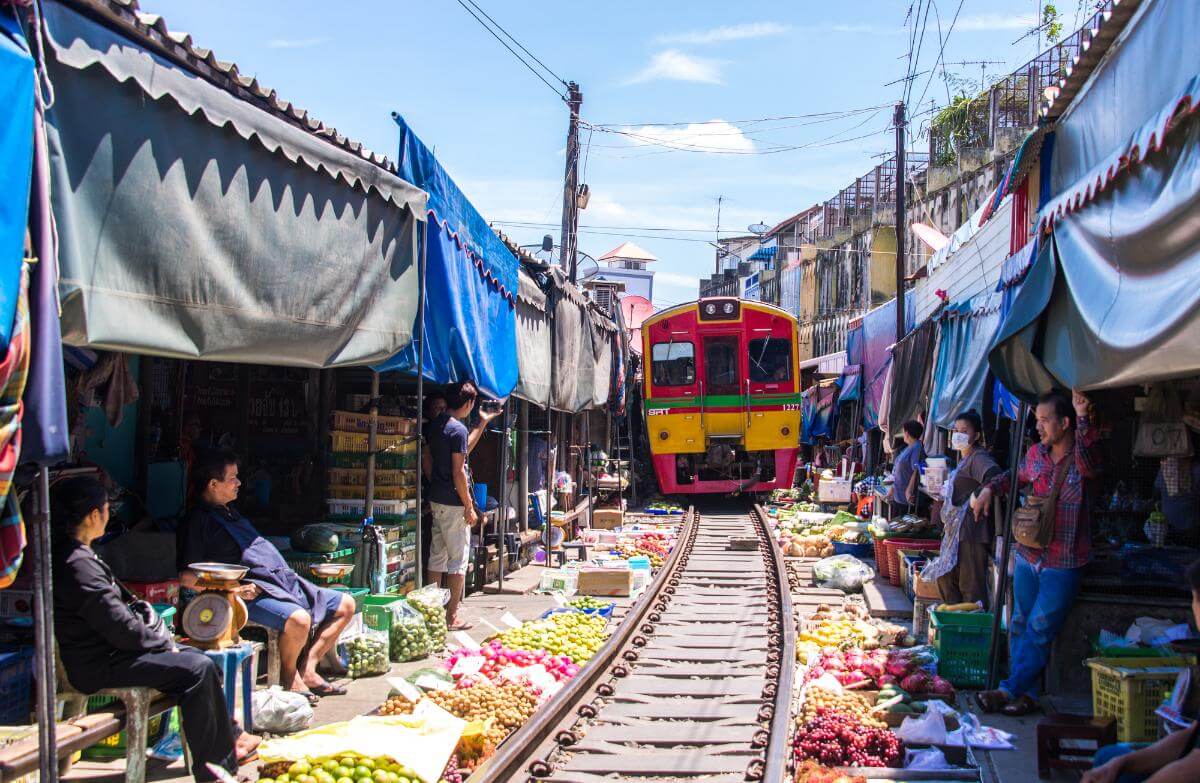
The Mae Klong Railway Market (also known as Talad Rom Hub Market) is a popular and unique market located in Samut Songkhram, Thailand. What makes this market special is its location directly on top of the railway tracks. The market is a bustling place where vendors sell fresh produce, seafood, and other goods, but what’s truly fascinating is the way the market reacts to the train passing through.
As the train approaches, the vendors swiftly move their goods away from the tracks, and the market stalls retract into the sides to allow the train to pass through. This happens multiple times a day, and the vendors resume their positions right after the train moves through. It’s an impressive display of coordination and a unique experience for visitors.
The market is not only a great place to observe this train-market interaction, but it also offers a taste of local life with a variety of traditional foods and fresh products. If you ever get a chance to visit, it’s a truly memorable and authentic Thai experience!
When Is The Best Time To Visit Bangkok?
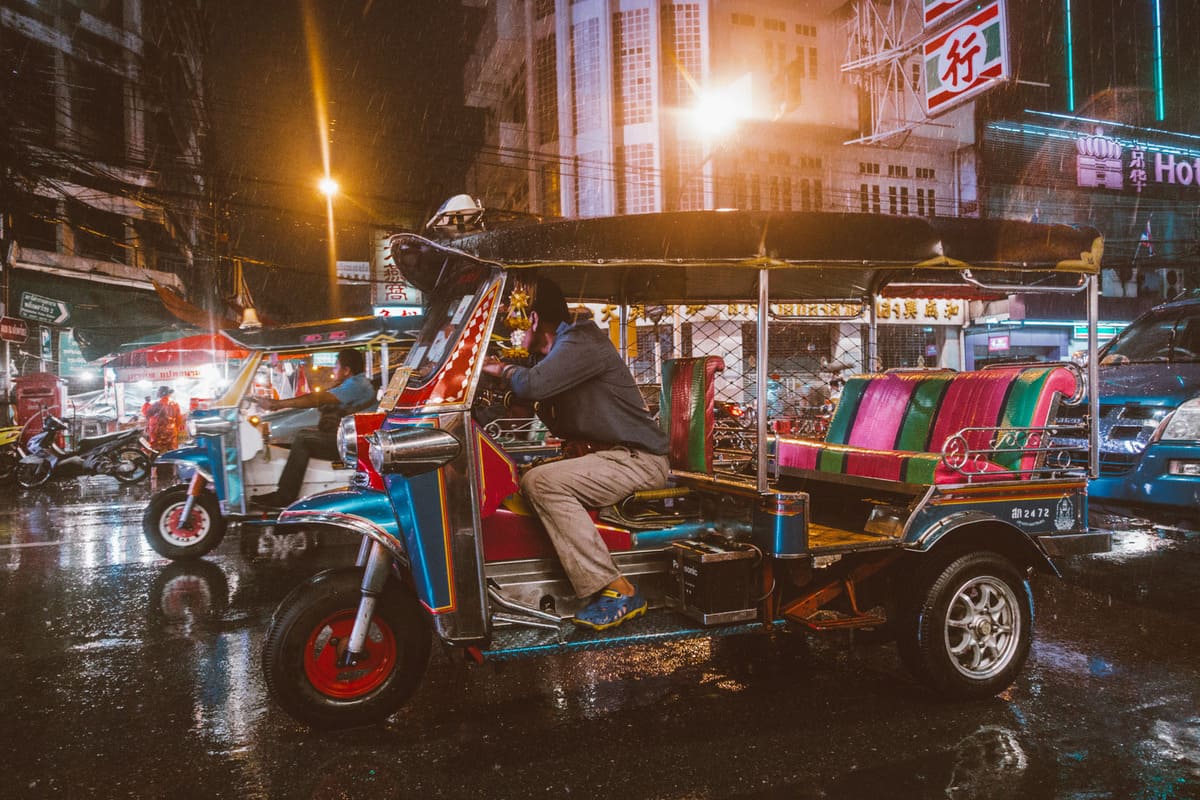
November to February is Bangkok at its finest. The weather is cooler with temperatures ranging from 22°C to 30°C, and there’s little to no rain. It’s the perfect time for exploring temples, shopping at outdoor markets, and taking river cruises. However, it’s also peak tourist season, meaning higher hotel prices and bigger crowds.
Bangkok starts heating up from March to June, and by April, the temperature can soar past 35°C. If you can handle the heat, you’ll be rewarded with fewer tourists and lower prices on hotels and flights. The highlight of this season is Songkran (Thai New Year) in mid-April, a massive water festival where the entire city turns into a giant water fight.
How Many Days Do You Need In Bangkok?
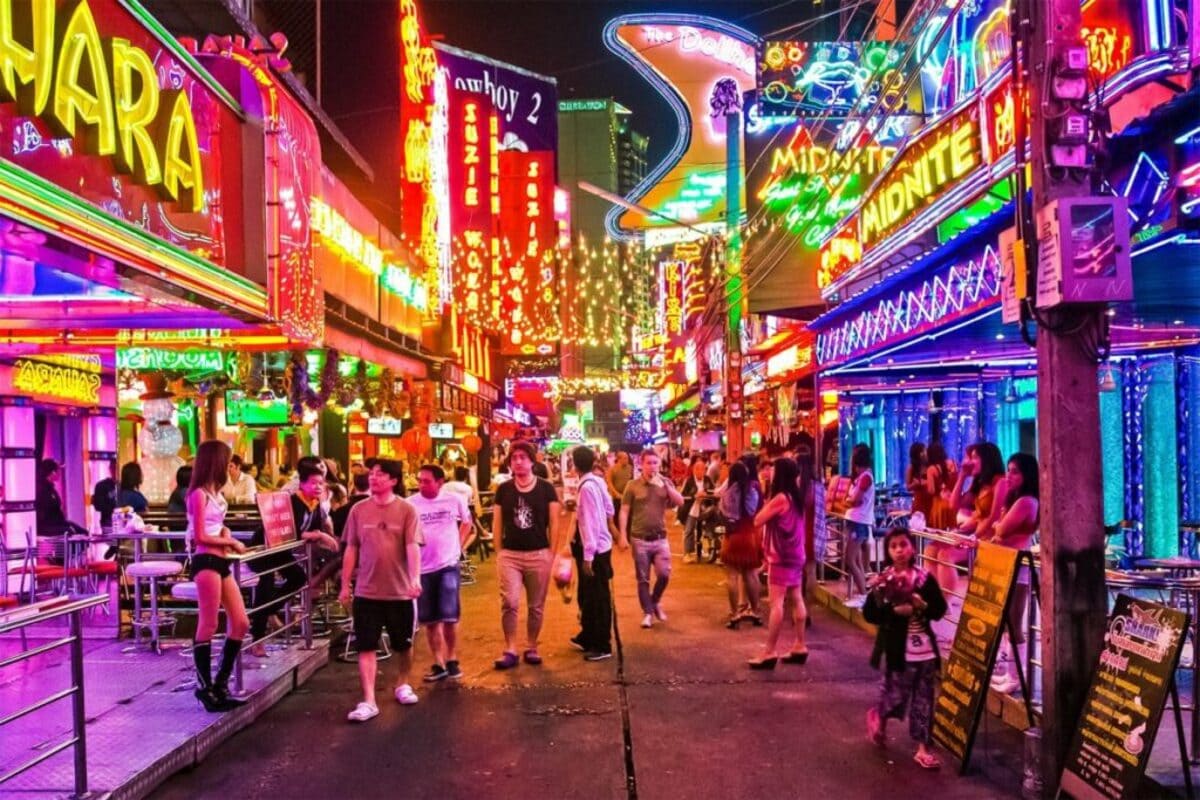
Bangkok is a massive, dynamic city, and how much time you need depends on what you want to experience. Some travelers do a quick stopover, while others spend a week or more exploring its many layers.
Personally, we recommend at least a 4 day trip for a well-rounded experience. This allows you to see Bangkok’s major sights while diving deeper into food, shopping, and local culture. You can hit up most of the essential spots, without needing to rush too much. You can take longer for a richer experience, but we’d say 4 days is the minimum.
Where To Stay In Bangkok?
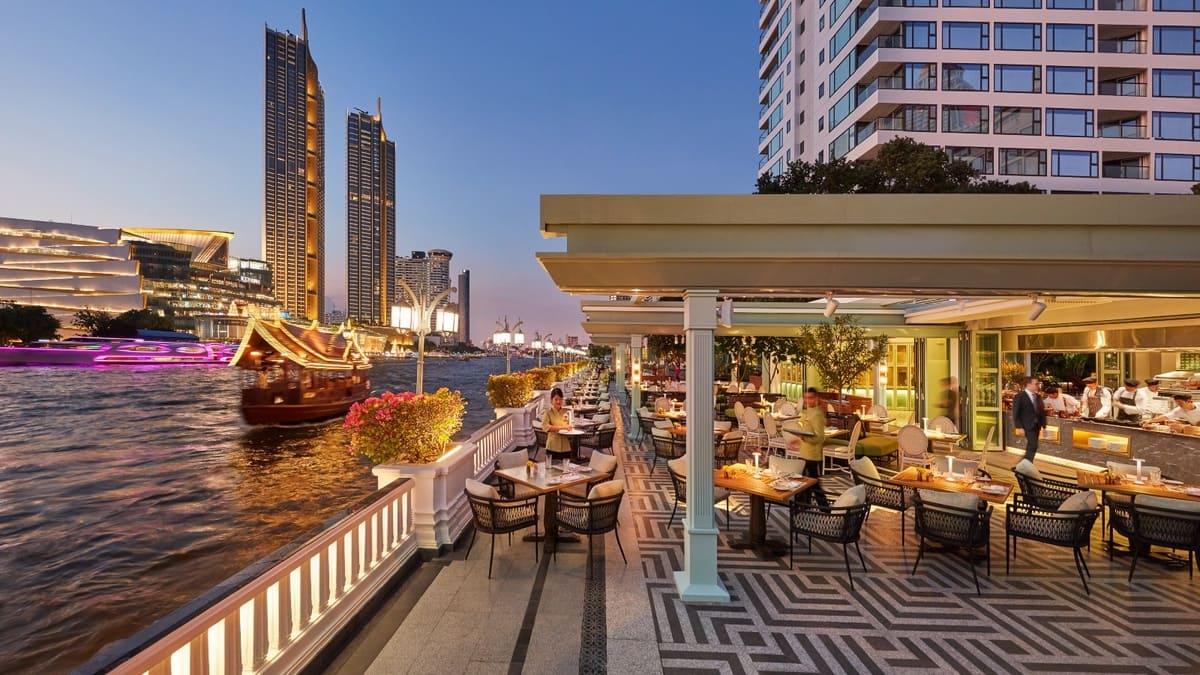
For those who want the best of the best, Bangkok’s luxury hotels offer sky-high pools, Michelin-starred dining, and world-class service. If you want great value without sacrificing comfort, you’re also spoiled for choice as Bangkok has a ton of great hotels to offer.
Mandarin Oriental Bangkok – Historic luxury by the river. This legendary hotel has hosted royalty and celebrities for over 140 years. Enjoy Thai-inspired suites, afternoon tea, and unbeatable riverside views.
Banyan Tree Bangkok – Sky-high luxury with an open-air rooftop bar, Vertigo. A great choice for romantic getaways and honeymooners.
Siam Kempinski Hotel Bangkok – A resort-style hotel in the heart of the city, right next to Siam Paragon. Ideal for shoppers and families.
Shanghai Mansion Bangkok – A beautiful boutique hotel in Chinatown with vintage Shanghai-inspired interiors and old-world charm. Perfect for food lovers.
Lub d Bangkok Siam – One of the best hostels in Bangkok, located near the BTS. Perfect for solo travelers and digital nomads.
Here Hostel Bangkok – A fun, social hostel near Khao San Road with an outdoor swimming pool and pod-style beds.
Anantara Riverside Bangkok Resort – A lush riverside resort with a tropical feel. Great for those wanting resort-style relaxation in Bangkok.
How Do You Get Around In Bangkok?
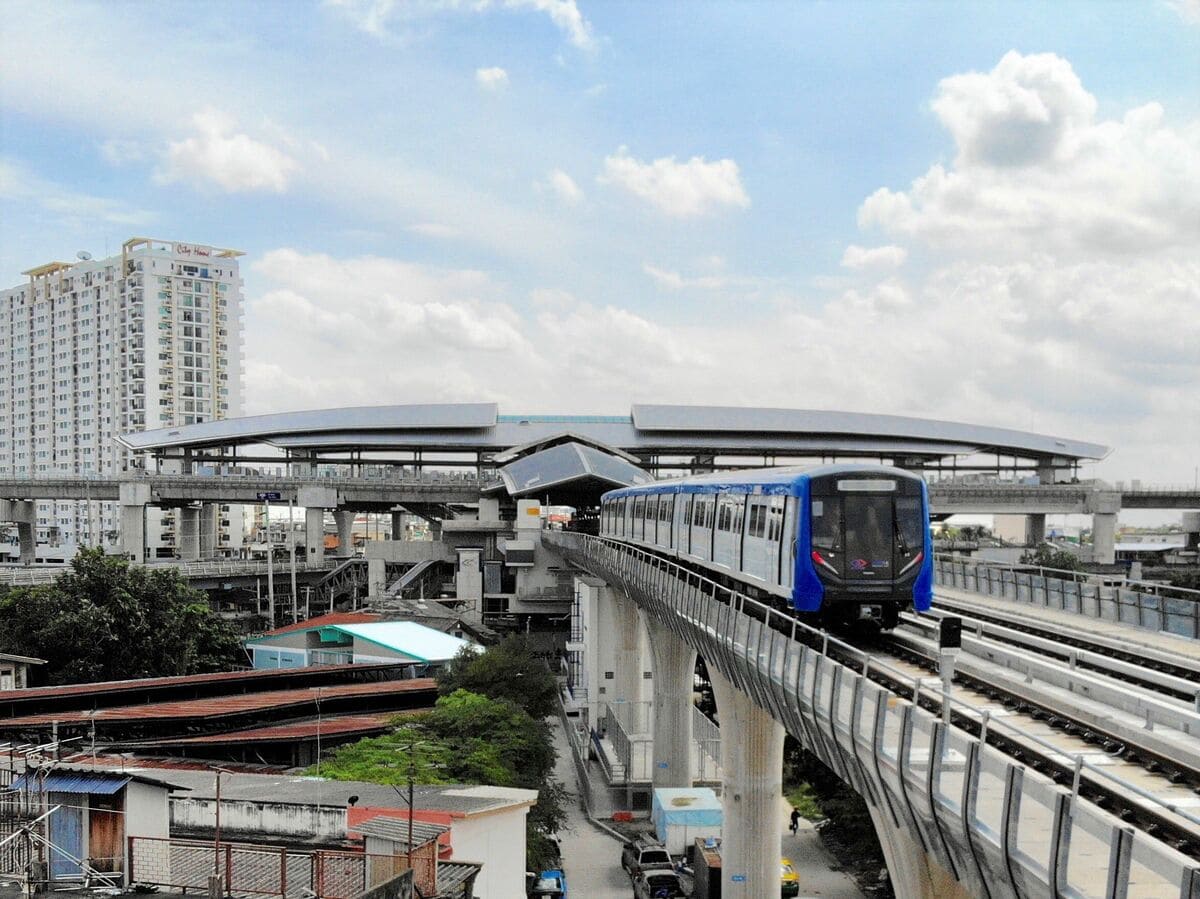
Bangkok’s traffic is legendary, but thankfully, the city has plenty of efficient, affordable, and fun ways to get around. The BTS Skytrain is fast, air-conditioned, and avoids the city’s notorious traffic jams. It’s the best option for getting around Sukhumvit, Silom, and Siam—Bangkok’s main commercial areas.
The MRT is another efficient, air-conditioned, and traffic-free way to get around. It connects key areas like Chinatown, Sukhumvit, and Chatuchak Market. For more freedom in getting around, you can also take taxis and tuktuks, though we would definitely recommending renting a car or motorcycle if you’re looking to take your time.
Conclusions
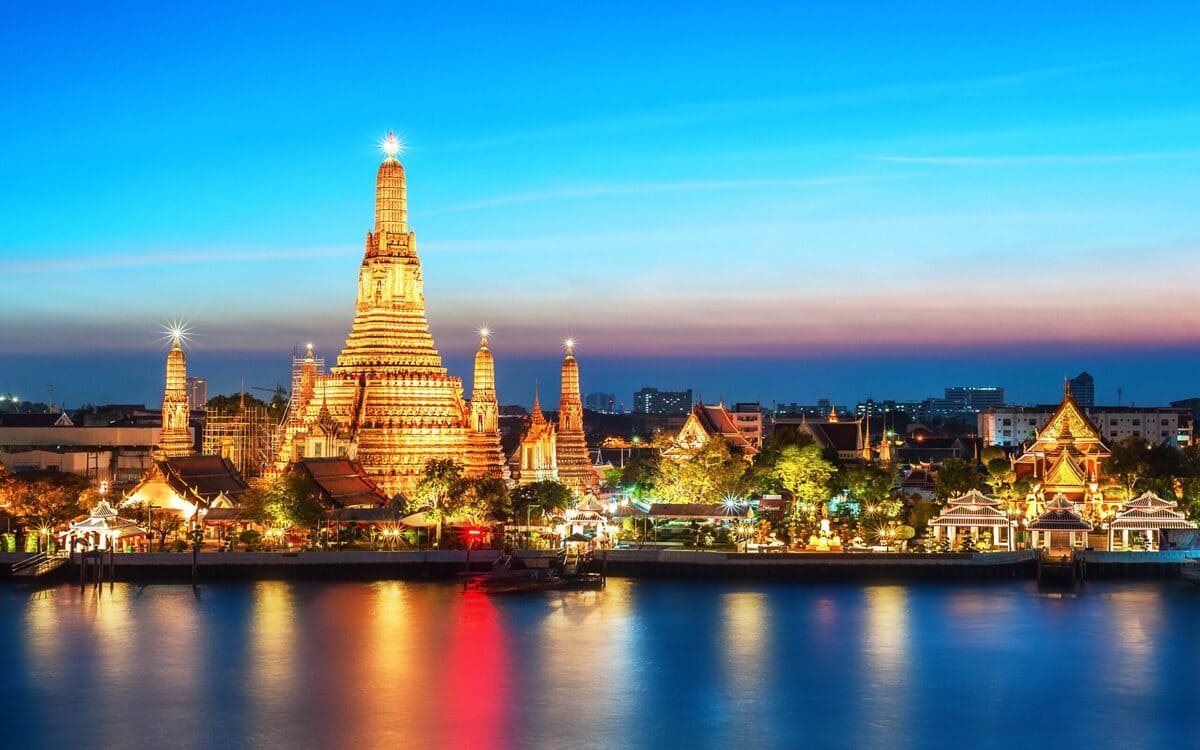
Bangkok is fast, vibrant, and endlessly exciting—a city that never sleeps but always has something new to discover. From its majestic temples and floating markets to its neon-lit nightlife and street food paradise, there’s a reason why it’s one of the world’s most visited cities. Whether you’re here for a whirlwind weekend or an extended stay, Bangkok always delivers.
Please follow my WhatsApp Channel for the latest updates. You can also Contact Me if you need any further assistance.






